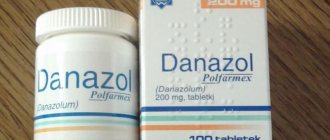The phenomenon occurs in women not only as a result of pathological changes in the body. Rare secretions from the glands are a natural process. It is determined by the characteristic structure of the paired organ. The fluid has a bloody or purulent consistency, accompanied by pain and compactions. If you notice any of the above symptoms, you should make an appointment with a mammologist. The specialist will identify the causes of discharge from the mammary glands when pressed, during pregnancy or before menstruation.
Types of discharge
In addition to the lactation period, the discharge is a liquid of varying thickness, smell, color, and intensity of seepage. It flows through the milk ducts just like breast milk. The characteristics of secretion are also taken into account - it is released spontaneously or due to palpation. The risk of developing the disorder increases with age and number of births.
White
It is normal for a few drops of liquid to leak out when there is significant compression of the mammary gland during breastfeeding. This consistency prevents the walls of the milk ducts from sticking together and is therefore acceptable. After the end of the lactation period, milk production gradually decreases over several months. If the process takes longer, it is advisable to consult a doctor. The cause of unnatural milky white discharge is an increased level of prolactin, indicating potential pathologies, which include:
- Imbalance of hormones in the body
- Galactorrhea observed even after the 20th week of completion of the lactation period
- Ectopic or frozen pregnancy, its artificial termination
- Destabilization of the hypothalamus or pituitary gland due to damage or the presence of a cancerous tumor
- The consequence of surgery is pinching of the nerve endings of the mammary gland
- Ovarian or adrenal disease
- Excessive use of contraceptives for a long time
Symptoms are complemented by discomfort when using a bra, tingling and burning in the chest area. The intensity of fluid secretion increases with physical activity and running.
Purulent
Purulent fluid from the nipples is the first sign of mastitis, intraductal papilloma. It is an abnormal benign neoplasm in the cavity of the milk duct, obliterating its lumen. Pus indicates an abscess, an abscess in the area of the mammary gland or nipple.
Stopping the inflammatory process involves taking antibiotics, using special compresses, and in exceptional cases, opening the abscess. Women over 40 years of age are susceptible to papilloma. The disease is confirmed using ultrasound, ductography, and laboratory studies of samples of secretion.
Bloody
Not related to bearing or feeding a child. In 80% of cases, they confirm the diagnosis of a benign or malignant tumor. Blood is present when the tumor damages the capillaries of the excretory ducts, which run from each nipple deep into the gland.
The amount of discharge and the intensity of their coloring increases as the tumor grows. It is especially dangerous if there is no history of chest injury or bruise of its soft tissues. Less commonly, this condition occurs when using a tight bra made of synthetic fabric. The material rubs the body and forms bleeding cracks on the sensitive epithelium of the nipple.
The condition is dangerous due to infection of the glandular tissue by pathogens. In medical practice, this pathological condition is defined as calf. The disease is accompanied by acute pain, purulent and bloody consistency from the nipples. Therapy involves observing hygiene rules and using special healing creams.
Dark green
Manifestation of cystic, nodular or fibrous mastopathy, breast abscess, intraductal papilloma. At the same time, periodic pain in the chest is observed (especially before menstruation), small nodules are felt. The etiology of the disease includes obesity, liver and kidney failure, problems with the thyroid gland and ovaries. These factors destabilize the hormonal balance and provoke the development of pain in the lower abdomen (including during sexual intercourse). Additionally, the menstrual cycle is disrupted.
Pathological discharge from the mammary glands
If the discharge from the mammary glands is opaque or has an unpleasant odor, then it is considered pathological. The following reasons can explain their appearance:
- Expansion of intraglandular ducts, which occurs when discharge appears. In this case, they may be green or another color. The pathology is eliminated surgically.
- Injury. If there is a strong blow to the chest, for example in an accident, then bleeding under the skin may occur, accompanied by pain.
- Intraductal papilloma. It is the same as on the skin. It is located inside the duct, blocking it. The discharge is bloody. The tumor is removed surgically.
- Fibrocystic mastopathy. Accompanied by dark or brown discharge. The disease is dangerous because it can develop into a malignant tumor. It is treated conservatively, but with the use of surgery.
- Abscess or mastitis. Both diseases cause yellow or purulent discharge. An abscess is characterized by clear boundaries of its development, where pus accumulates, in contrast to mastitis, where the boundaries are unclear. These diseases appear as a result of infectious infection. Treated with antibacterial drugs. Sometimes the pus has to be opened.
- Mammary cancer. The nature of the discharge may vary. Typically, discharge is observed from only one nipple, in which breast cancer develops. In this case, the following symptoms are observed:
- Changing the shape of the nipple.
- Soreness of the lymph nodes in the axillary area.
- Breast tenderness.
- Paget's disease. Malignant neoplasm in the nipples. Discharges are of a different nature.
- Ductectasia is an enlargement of the suboreolar canals that clog the glands. As a result, inflammation and fluid coarsening occur.
- Eczema-like cancer is a type of cancer that forms in or around the nipples and is treated with surgery.
- Cystitis, syphilis, vaginitis and other sexual diseases.
- Irritation after breastfeeding.
- Galactorrhea is the release of colostrum or milk after long-term use of hormonal medications, which is not associated with the lactation period.
go to top
Colostrum release before menstruation
A natural process during pregnancy, in other cases it indicates hormonal disorders that contribute to the development of mammary gland diseases. The diagnosis is confirmed by the results of a blood test for prolactin. The use of contraceptives is the main reason for the appearance of sticky yellowish liquid from the nipples on the eve of menstruation. Associated symptoms: nipple enlargement, chest discomfort, increased sensitivity.
It is acceptable to secrete colorless and odorless secretion during menstruation up to 2 drops upon palpation. High levels of estrogen at the beginning of the cycle contribute to breast swelling. Its value returns to normal after menstruation.
Causes of mastopathy during menopause
A woman's breast is a hormone-dependent organ, what does this mean? This means that during the period of childbearing age, normal functioning of the mammary glands is maintained by fluctuations in sex hormones depending on the phase of the menstrual cycle. With the onset of menopause, there is a sharp decrease in the production of reproductive substances, which leads to structural changes in the tissues in the breast.
However, not only hormones are to blame for the development of breast fibroadenomatosis during menostasis; a major role in the condition of the breast after the extinction of ovarian function is played by what changes have occurred in the patient’s reproductive system throughout her life. Recent studies have shown that provoking factors that increase the risk of developing the disease during menopause include:
- Early menstruation . The earlier a woman begins menstruation, the higher the risk of facing the issue of mastopathy and menopause in the future.
- History of sexually transmitted diseases . Any sexually transmitted diseases in youth have a detrimental effect on the reproductive system during menostasis, especially if they were not eliminated in a timely manner.
- Gynecological diseases . Inflammatory diseases of the reproductive organs also become an impetus for the development of complications during menopause.
- Too early or late pregnancy . In both cases, pregnancy at an inappropriate age can result in functional changes in the tissue of the mammary glands. A complete absence of pregnancy is also dangerous.
- Short term breastfeeding, forced suppression of lactation . Many women, not wanting to lose their bust shape, deliberately refuse breastfeeding. Such actions invariably lead to various changes in the mammary glands during menostasis.
- Frequent abortions . Abortion is a severe stress for the body, which causes sudden surges in hormones.
- Uncontrolled oral contraception . Taking hormonal drugs without medical supervision has a negative impact on the health of the entire reproductive system, including the condition of the mammary glands.
Important! If at least one of these factors has been present in your life, you are at risk!
Discharge during pregnancy
Changes in the female body are natural during pregnancy. They also relate to the condition of the mammary glands, which:
- They increase in volume, which contributes to unpleasant sensations and itching of the skin
- They increase their sensitivity, after which the woman reacts to minor touches
- Change the color of the areolas (during this period the venous network of the breast is more noticeable)
- Exudes colostrum - the first breast milk
Discharge from the nipples during pregnancy is acceptable, is a natural phenomenon, and has a yellowish tint. At first, colostrum is quite thick, but over time its consistency becomes thinner. The timing of the appearance of secretion varies from the first trimester of pregnancy to the period after childbirth.
You should be wary when colostrum becomes bloody or bright yellow. The condition is accompanied by aching pain in the chest area. Deformation of the glands occurs. Symptoms indicate the occurrence of a pathology that requires examination by a specialist. Recommendations for breast care during pregnancy include maintaining good hygiene, refraining from expressing secretions, and using a comfortable bra.
Main causes of discharge
In many cases, the appearance of discharge from the chest indicates the presence of a pathological disease. Possible causes of fluid discharge may be diseases:
- Ecstasy of the milk ducts is characterized by inflammation of the excretory tract, and exudation may begin. The very first symptom may be the appearance of discharge from the nipple in gray or greenish shades. It occurs on its own when pressed. The disease is observed in women after 35 years of age. For treatment, compresses are applied to the chest. To eliminate pain, you need to take an anti-inflammatory non-steroidal medication. Treatment with antibiotics is necessary, if the case is quite complex, surgery will be necessary.
- Mastitis is an acute infectious disease observed during breastfeeding. Symptoms of the disease: breast swelling, sharp pain in the chest, changes in the skin of the mammary gland. The body temperature rises to 39 degrees, due to the accumulated pus, the discharge becomes green. Mastitis can occur if a woman does not pump correctly, then lactostasis develops, its appearance is possible due to cracks in the nipples and poor hygiene. If the condition worsens, it is necessary to stop breastfeeding, start using antibiotics, and detoxification therapy. If an abscess is present, surgical intervention is necessary.
- Galactorrhea is the spontaneous secretion of milk and colostrum in a woman who is not pregnant or breastfeeding. Milk begins to be secreted when exposed to the hormone prolactin. Pituitary tumors, trauma, formations on the hypothalamus. Diseases of the thyroid gland, adrenal glands, ovaries, stress, kidney and liver failure. If the causes of milk discharge are not known, a diagnosis of idiopathic galactorrhea is made. The main signs are white discharge from the breasts, menstruation is disrupted, excessive body hair grows, acne appears, and libido decreases. For treatment, drugs are prescribed that reduce the secretion of prolactin.
- Papilloma inside the ducts. Neoplasms can arise in the lumen of the milk duct; they are benign neoplasms. The pathology is observed in women who are over 40 years old. A characteristic symptom is bloody fluid from the nipple, when pressed or spontaneously. This can be seen if there are stains on the bra. For diagnosis, analysis of discharge from the breast, ultrasound, and histological examination are carried out.
- Breast cancer is a disease that does not manifest itself for some time. The initial symptoms are bloody discharge. Characterized by enlargement of the gland that is affected, the presence of compaction.
- Paget's disease is considered a rare form of cancer that affects the nipple. There may be deformation, retraction of the nipple into the breast, darkening and redness. A burning sensation and itching may occur.
- Injured chest. After breast injuries, bloody fluid may appear, becoming lighter as it heals.
If a secretion oozes, it is usually provoked by the following conditions and diseases:
- Gestation (characterized by the production of a hormone that prepares the breasts for lactation).
- Inflammation of gland structures.
- Increasing the width of the ducts and reducing their elasticity.
- Long-term course of treatment with hormone-containing drugs.
- Mastopathy.
- Oncological diseases.
- Injuries of the mammary glands.
There are many reasons, and therefore, if a woman has chest pain and the discharge gives off an unpleasant odor, then urgent measures must be taken to eliminate it.
Causes
Breast milk is a natural secretion consisting primarily of lactose. If it contains bloody or purulent impurities, it is difficult to identify the etiology of the pathological condition based on the appearance of the consistency alone. Similar phenomena are observed in men with a pituitary tumor, acromegaly, and accompany the use of certain medications. Against the background of severe endocrine disorders, high levels of prolactin in the blood (hyperprolactinemia), craniopharyngomas, the pathological condition is diagnosed in children.
The secretion of milk during lactation is a natural reaction of the female body, which makes it possible to provide the child with adequate nutrition. Under other circumstances, symptoms give rise to suspicion of a number of diseases.
Galactorrhea
It is an accurate definition of the diagnosis when milk leaks from the breast due to unnatural factors - absence of pregnancy or after menopause. The cause of the disease is:
- Hormonal disorders, excessive use of contraceptives
- Endocrine diseases, damage to internal organs (renal failure)
- Mechanical damage to the armpit, traumatic encephalopathy
- Diseases of the epidermis in the décolleté area, consequences of laparotomy
- Pathologies of the hypothalamus, tuberous sclerosis
Depending on the etiology and the degree of progression of provoking factors, milk takes on a different shade - from pale yellowish to dark brown. With a reduced concentration of sex hormones and ovarian atrophy, the development of persistent lactorrhea-amenorrhea syndrome cannot be ruled out.
Ectasia of the milk ducts
Mastitis
It is one of the most common complications of the postpartum period. The development of the disease is explained by the structure of the epithelial tissue of the nipple. The risk of mastitis increases due to the need for frequent lactation and poor personal hygiene.
In 9 out of 10 cases, pathology develops due to the penetration of staphylococci or streptococci into the mammary gland tissue. Tissue suppuration develops, which contradicts the possibility of further feeding the child. It is accompanied by the discharge of a cloudy, thick liquid mixed with blood from the nipples.
Symptoms are complemented by:
- Redness of the skin, increased body temperature
- Swelling of the nipples, penetration of purulent masses into the milk
- Nagging pain, body weakness
The phenomenon complicates lactation if the delicate skin of the nipple is damaged in the form of numerous cracks. You can prevent blood from getting into your milk by lubricating your breasts with lanolin ointment when feeding. But first you should get your doctor's approval.
Consequences of chest injury
Domestic troubles, accidents, force majeure, aggression from others, and accidental falls are potential causes of chest damage. Injured adipose tissue, the cellular substance deep in the mammary gland, leads to necrosis and septic mastitis.
The likelihood of disease increases when detected:
- significant swelling, lumps in the chest
- darkening of bruised areas
- damage to the milk ducts, subsequent spontaneous release of bloody fluid from them
- high temperature of damaged areas
Minor hematomas resolve on their own within 2-3 weeks. In case of extensive damage, external treatment with ointments or antibacterial agents alone is not enough as therapy. In 35% of cases, the consequences of injuries of any kind appear after 12-18 months.
Timely consultation with a doctor reduces the risk of developing cancer.
Fibrocystic mastopathy
It is characterized by the formation of single or multiple nodules of varying density and size in the breast area. They have clear contours. Long-term absence of treatment is dangerous due to the degeneration of the neoplasm into a malignant tumor. The condition is accompanied by aching pain with a periodic increase in its intensity before menstruation.
Irradiation of pain to the back, armpits or forearms is caused by pinched nerves by pathological nodes. Premenstrual symptoms (swelling and enlargement of the breasts, discomfort in the lower abdomen, irritability) accompany nipple discharge. The secretion is green or purple in color, the volume varies from a few drops protruding upon palpation of the chest to copious masses.
Malignant formation
Possibly in any area of the chest, inside and outside the milk ducts. Bloody discharge is one of the signs of a cancerous tumor, which is confirmed by specialized diagnostics. Therapy includes exclusively surgical methods: mastectomy and lumpectomy.
Paget's disease
It is one of the types of malignant tumors on the nipples that spread to the areola. The origin of the pathology is not fully understood; there are only theories. Men and women, mainly from 45-50 years old, are susceptible to the development of the disease. Symptoms include:
- Inflammation of the nipple tissue, redness and scaly rash on the chest
- Pain, itching, areola hypersensitivity
- Regular bleeding from the nipples
- Palpable hard nodules in the chest, observed in every second case
Pathology can spread to one or both glands at the same time. The disease is oncological and requires surgery and the use of anti-cancer and hormonal drugs.
Provoking factors
There are quite a few reasons for discharge from the mammary glands in women when pressed. In medicine, they are conventionally divided into physiological (natural) and pathological.
Pathological factors
Intraductal papilloma
Pathological conditions accompanied by discharge from the chest include:
- Intraductal papilloma is a benign neoplasm located in the gland duct, visually resembling a polyp. Most often diagnosed in women over 40 years of age. A characteristic symptom is the release of bloody fluid.
- Mastitis is an inflammatory process that develops during breastfeeding. The provoking factor is a bacterial infection, most often Staphylococcus aureus. With the development of pathology, purulent masses accumulate in the chest, and the discharge has a greenish color.
- Fibrocystic mastopathy develops against the background of hormonal imbalance. Over time, the formations increase in size, which entails an increase in the volume of discharge. The secretion is predominantly white, less often with bloody spots.
Provoking factors of a pathological nature include ectasia (dilation of the milk ducts), menstrual irregularities, fibroadenoma, nipple adenoma, galactorrhea, as well as various injuries to the soft tissue of the breast.
Natural causes
Secretions from the breast can be released for 2-3 years after the end of lactation
Physiological causes of secretion when pressed are quite safe and in most cases do not require conservative therapy. The following factors fall into this category:
- Pregnancy. While carrying a child, the mammary glands prepare for its birth and further lactation. This process, as a rule, actively occurs in the middle and towards the end of the third trimester. Increased tone of the uterus stimulates the production of yellowish or cloudy-white fluid. If, during pregnancy, a woman begins to secrete a secretion that is pinkish or contains blood, she should immediately consult a doctor. Also, small amounts of discharge can be disturbing in the early stages of pregnancy. This is due to hormonal changes in the body.
- Lactation. At the end of lactation, secretions from the breast can be released for another 2-3 years. This directly depends on the woman’s age and the number of pregnancies.
- Abortion. The presence, quantity and characteristics of the fluid depend on the duration of the terminated pregnancy.
- Long-term use of oral contraceptives. Contraceptives contain hormones that stimulate the production of secretions in the mammary glands. The discharge should go away after replacing the drug or discontinuing it.
A small amount of clear liquid is released when taking antidepressants and medications that contain domperidone and metoclopramide.
Which doctor should I contact?
If you have chest pain or discharge from the nipples of unknown etiology, you should contact a gynecologist or therapist. The mammologist treats diseases of initial and moderate severity independently, without the assistance of an oncologist. In severe clinical cases, the intervention of an oncological surgeon is inevitable. Therefore, aggravating the body’s condition and self-medicating is dangerous to life and health. Therapy in the early stages of pathology minimizes the likelihood of further implementation of radical therapeutic techniques.
Diagnosis of diseases and necessary tests
- Ultrasound is a safe and very informative method that has no contraindications, used to identify pathologies.
- Mammography is performed using x-rays.
- MRI - magnetic resonance imaging.
- Ductography is a variant of mammography using a contrast agent, which allows you to see the entire milk duct.
- analysis for the level of prolactin and other hormones.
- biopsy - tissue sampling to detect cancer cells.
- cytological examination of secretions from the gland, etc.
A doctor must decipher the tests, establish a diagnosis and prescribe treatment.
Diagnostics
Initially, breast diseases are detected by palpation. Detected nodules are accompanied by pain and give reason to suspect a specific pathology. The optimal time for the procedure is 9-11 days from the beginning of menstruation, when the breasts return to their normal state. Palpation makes it easy to determine the degree of swelling, dilation of veins and arteries, and asymmetry of the contours of the glands. In addition to thermography, comprehensive diagnostics includes:
- Laboratory blood tests. They allow you to identify inflammatory processes by increasing the level of leukocytes and increasing ESR levels.
- Mammography. Helps detect tumors in the early stages of development more accurately than MRI, which is prescribed less frequently due to the large number of false results.
- Ductography. Allows you to exclude or confirm the presence of ectasia, intraductal papilloma, neoplasm. The injected contrast agent helps determine the specific location of the malignant neoplasm.
- Ultrasound. The result of the study provides a clearer clinical picture if inflammation or tumor processes are suspected. The method is informative in terms of determining the spectrum of damage. An ultrasound must be performed before surgery.
- Cytological examination of a sample of the secretion of each nipple to analyze the bacterial microflora.
Blood tests for the presence of high concentrations of prolactin are carried out to confirm the pathology of the pituitary gland. Determining the concentration of thyroid-stimulating hormone gives an idea of the state of the thyroid gland. The presence of human chorionic gonadotropin in the blood is detected by a standard pregnancy test. The doctor pays special attention to the color and temperature of the skin of the chest and the size of the lymph nodes. Studying the anamnesis and assessing the nature of secretion from the nipples helps to establish a more accurate diagnosis.
Cytology of discharge
Cytological examination determines the exact number of cancer cells in the fluid secreted by the mammary glands. The diagnosis is confirmed by accompanying techniques. A puncture of the skin of the areola is performed if Paget's cancer is suspected. A biopsy of the nipple epidermis is an accurate diagnostic procedure that allows you to determine the number of tumor cells. It involves taking a piece of tissue to study under a microscope and differentiate the nature and type of neoplasm.
Diagnostic methods
Before the examination, the woman should inform the doctor about how long ago the discharge from the breast began, the accompanying pain, the frequency of the symptoms, the hormones used, and previous injuries to the breast.
The diagnosis is determined using:
- Palpation of dense breast tissue.
- Mammography.
- Ultrasound diagnostics.
- Ductology is an X-ray where a contrasting color substance is injected into the breast tissue.
An examination on the second or third day after the end of menstruation will give a more accurate and accurate answer.
If an oncological disease is suspected, a puncture is required - an examination of the soft tissue of the inflamed area of the skin or the secreted fluid under a microscope for the presence of atypical bodies.
Prevention
To prevent the development of breast diseases it is necessary:
- Maintain optimal body weight and daily physical activity
- Maintain proper diet and sleep
- Avoid blows, bruises, cuts, punctures and other damage to the chest and décolleté area.
- Do not neglect natural feeding
- Give up bad habits, minimize the number of stressful situations
- Limit from excessive use of hormonal drugs
- Be examined by a mammologist twice a year
It is equally important to regularly self-palpate the glands. If there are neoplasms, they can be most clearly felt during menstruation. In everyday life, it is better to use comfortable underwear made of natural fabric. The bra should support the breasts, not compress them.
The listed recommendations have a positive effect on hormonal levels, help strengthen the immune system, and minimize the risk of pathological discharge from the mammary glands.
What causes discharge?
Women's breasts contain milk ducts, which are located between fibrous and fatty tissue. Each canal has an opening at the top of the nipple. All women have an individual number of ducts, but the maximum number can reach up to fifteen. Through the milk ducts, not only milk and colostrum are produced, but also physiological secretion.
In the absence of diseases or the influence of external negative factors, the following condition is inherent in whitish, transparent discharge from the mammary glands:
- scanty and abundant;
- thick and watery;
- viscous or slimy.
Any uniform consistency of secretion from the canals is normal, but only against the background of a transparent shade of liquid and a small volume. If there is too much discharge, it is not recommended to postpone a visit to the mammologist.
For a certain condition, there are indicators of the norm of physiological secretion:
- Scanty, thick (one or two drops). It is noted when pressing on the chest in young girls and nulliparous women a few days before menstruation and during increased sexual arousal.
- Not very abundant, liquid. Characteristic of older women and women who have given birth, but the appearance of thick liquid is possible.
- Viscous. Colostrum occurs during gestation, breastfeeding, and for several years after cessation of lactation (individual indicator).











